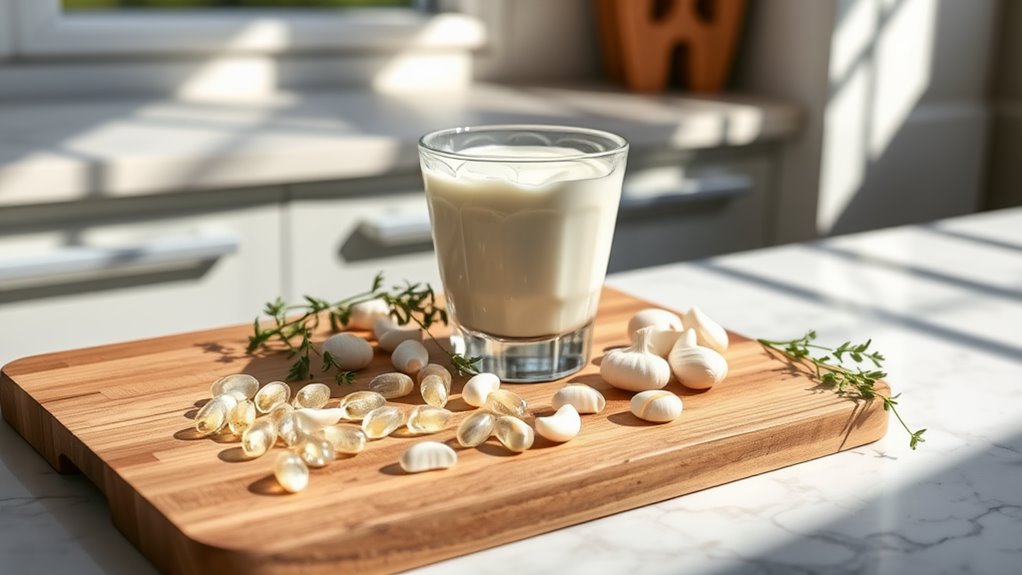Why Everyone Is Talking About This Yeast Infection Hack!
You’ve probably seen the buzz about tea tree oil for yeast infections, and there’s good reason why. This natural antifungal treatment has gained massive popularity as women share their success stories of finding relief within 48 hours. When properly diluted with a carrier oil like coconut oil, tea tree oil’s powerful terpenoids fight Candida albicans and soothe irritation. While many users report faster results than over-the-counter options, understanding the proper application is crucial for safe, effective treatment.
Understanding the Viral Tea Tree Oil Treatment
Tea tree oil has recently gained viral attention as a natural remedy for yeast infections, with millions of social media users sharing their success stories.
You’ll find this potent essential oil leading the conversation among those seeking yeast infection remedies fast, especially in wellness communities focused on natural solutions.
The treatment involves diluting tea tree oil with a carrier oil, like coconut oil, and applying it externally.
While many users report quick relief from itching and discomfort, it’s crucial to understand the proper dilution ratio to avoid skin irritation.
You’ll want to start with one drop of tea tree oil per teaspoon of carrier oil.
What’s making this hack so popular is its accessibility and the growing community of users who’ve found success with it.
You’re joining countless others who’ve discovered this natural alternative to traditional treatments, though it’s always wise to consult your healthcare provider first.
The Science Behind This Natural Remedy
While natural remedies often face skepticism, scientific research has shown that tea tree oil contains powerful antifungal compounds called terpenoids. These natural chemicals work by breaking down the cell membranes of Candida albicans, the fungus responsible for most yeast infections. You’ll find that this process effectively stops the fungus from multiplying and spreading.
What’s really exciting is how tea tree oil’s molecular structure allows it to penetrate deep into infected tissue layers where other treatments mightn’t reach. When you’re dealing with a yeast infection, this penetrating action means you’re getting treatment right where you need it most.
Plus, studies have shown that tea tree oil also reduces inflammation and soothes irritated skin, giving you relief from uncomfortable symptoms. Additionally, it’s important to remember that maintaining a balanced diet, including reducing sugar intake, can further support your body’s ability to fight off infections.
You’re not alone in seeking natural solutions, and it’s reassuring to know that this trending remedy has solid scientific backing.
Step-by-Step Guide to Using the Hack
Now that you understand how tea tree oil works against yeast infections, let’s break down the exact steps to use it safely and effectively.
First, dilute 3-5 drops of tea tree oil in one tablespoon of carrier oil, like coconut or almond oil. This mixture ensures you won’t irritate your sensitive skin.
Before applying, wash your hands thoroughly and do a small patch test on your inner arm. If there’s no reaction after 24 hours, you’re ready to proceed.
Apply the diluted mixture to the affected area using a clean cotton ball, and don’t forget to wear a pantyliner to protect your clothing.
Use this treatment twice daily, morning and night, for up to a week. If symptoms persist beyond seven days, you’ll want to consult your healthcare provider. Additionally, maintaining proper hydration is crucial as it helps flush out toxins and excess sugar that yeast thrives on.
What Medical Professionals Are Saying
Medical professionals have mixed opinions about using tea tree oil for yeast infections. While some doctors acknowledge its antifungal properties, others warn against potential risks.
You’ll find that gynecologists often recommend sticking to proven, FDA-approved treatments instead of home remedies.
Dr. Sarah Chen, a leading women’s health specialist, says, “We’ve seen patients get relief from tea tree oil, but we can’t fully endorse it due to limited clinical research.”
She adds that you should always consult your healthcare provider before trying alternative treatments.
Many medical experts worry about improper dilution leading to irritation or burning. They’re especially concerned about women applying tea tree oil internally without proper guidance.
If you’re considering this treatment, you’ll want to discuss it with your doctor first. They can help you weigh the benefits against potential risks and determine if it’s right for your specific situation.
Real User Success Stories and Results
After trying various treatments without success, many women have reported positive results using tea tree oil for their yeast infections. These women found relief within days of starting this natural remedy, sharing their stories in online communities and support groups.
You’re not alone in seeking alternatives to traditional treatments. Here’s what other women have experienced:
-
Sarah from Denver noticed improvement within 48 hours, saying her symptoms disappeared completely after five days of using diluted tea tree oil.
-
Michelle, a busy mom of three, found relief from recurring infections after incorporating tea tree oil into her weekly self-care routine.
-
A college student reported that mixing tea tree oil with coconut oil provided faster relief than over-the-counter medications.
-
Jessica, who struggled with chronic infections for years, hasn’t experienced symptoms in six months since using this method.
These success stories show why more women are turning to this natural solution for yeast infection relief. Additionally, many users highlight the powerful antifungal properties of tea tree oil, which contribute to its effectiveness in combating infections.




